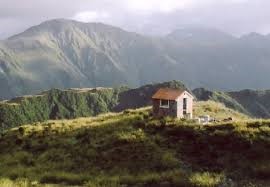Wind Load
The wind load imposed on a roof structure is taken to apply at right angles to the roof cladding over a nominated area. The design wind load is affected by the design of the building and is modified using factors called pressure coefficients. Wind design load is measured in kilopascal (kPa); 1 kPa equals 1 kN/m².
Under wind loads, inwards loads are resisted by the purlin or girts, whilst outward loads are only resisted by the fastener head or clip. Therefore, outwards load is the more critical figure.
Engineers calculate both the serviceability load and the ultimate load. They compare these values with the maximum failure loads of the products and systems they are considering.
Load/span data for standard corrugate, and low rib 5 and 6 ribbed trapezoidals is at the end of this section.
Load/Span Data clauses
| Design | Steel | Aluminium |
|---|---|---|
| NZS 3604 | G550 Steel Cladding Fastening Pattern Tables | Aluminium Fastening Pattern Tables |
| SED | Steel Cladding Wind Load Span Graphs | Aluminium Cladding Wind Load Span Graphs |
Refer to manufacturer's load/span tables for all other profiles, which should give the maximum recommended load for continuous spans when tested as described in Testing Procedure.
Sheltered by Trees, "Urban Terrain"

Surrounded by flat ground, "Open Terrain"
Topographical Influences
Wind Design Load is affected by building design factors such as building height, shape, proportions, orientation, and roof pitch. Permeability can also be a big factor; buildings with large openings on one side but completely closed on the other three sides will suffer high internal wind pressures. These internal pressures must be added to the suction load on the outside of the roof when calculating wind design load.
Local territorial authorities are usually able to give wind speed figures for a specific address in their area. All other factors, including topographical influences, internal, and local pressure factors must be considered by a suitably qualified professional to calculate the design wind load on a structure.
- Log in to post comments


